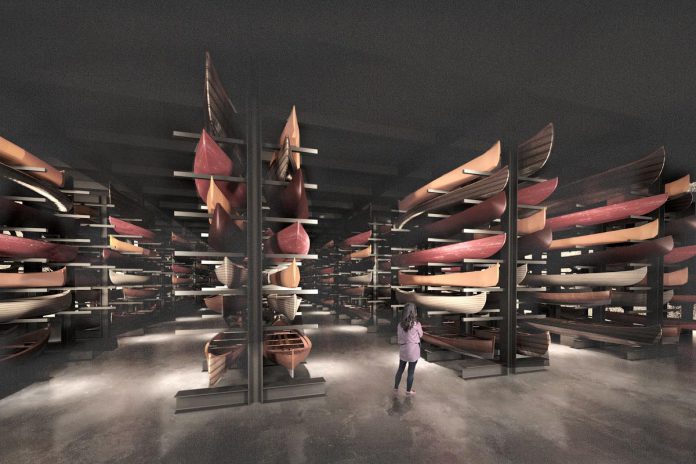
As the spring grand opening of The Canadian Canoe Museum’s new facility on the shores of Little Lake draws closer, the museum is approaching another monumental milestone as part of its move — its team has begun to install the remainder of the world’s largest collection of paddled watercraft in the Collection Hall.
While the canoes and kayaks featured in the new 20,000-square-foot Exhibition Hall have already been moved in, these 100 watercraft represent only one-sixth of the entire collection that will be housed in the state-of-the-art facility at 2077 Ashburnham Drive.
Over the coming months, another 500 watercraft will be installed in the similarly sized Collection Hall. Once that milestone has been completed, the entire collection will — for the first time in the museum’s history — be under one roof and accessible to visitors. At the museum’s previous Monaghan Road location, visitors could only see around 20 per cent of the collection on exhibit.

As the next phase of the “Move the Collection: The Final Portage” fundraising campaign, The Canadian Canoe Museum is launching the “Fill the Collection Hall” campaign on Giving Tuesday (November 28) to support moving the remaining watercraft into the Collection Hall.
“A key reason we’re making this move is to put this collection in a safe and accessible place that matches the quality and significance of the collection,” says Carolyn Hyslop, the museum’s executive director. “We’re giving the collection Class ‘A’ Museum Environmental Control standards with the infrastructure in place to look after it and make it accessible for visitors.”
Located on the main floor at the north end of the building, the Collection Hall will see the canoes and kayaks stacked on shelves, bow-to-stern and six vessels high. Each watercraft will be on a custom-built cradle, allowing for easier and safer transportation between the Collection Hall and the Exhibition Hall.
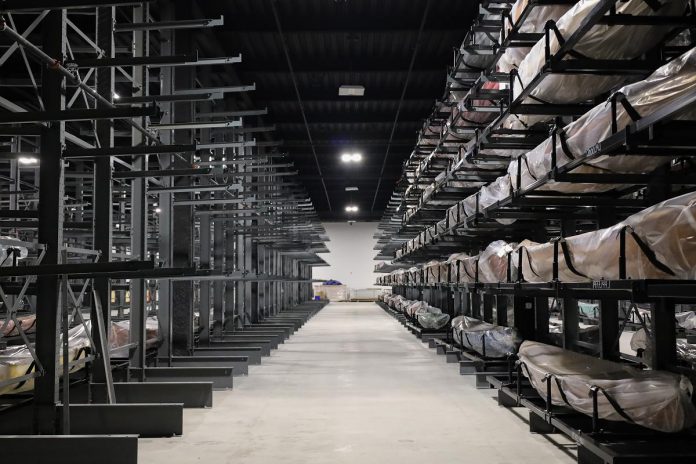
“At 20,000 square feet, this room has been designed to meet our commitment that the full collection would be stored on-site with room for growth,” says Jeremy Ward, the museum’s curator. “That’s always been out of reach for the public, as it’s always been in a warehouse that is not accessible except under exceptional circumstances, so this is a dream come true.”
Watercraft in the Collection Hall will be arranged by construction type, as it is the one piece of information that is known about every watercraft in the collection. Aside from practicality, associate curator Beth Stanley explains that the museum’s organizational methods will allow visitors to grasp the magnitude of the various vessels in the collection.
“It’s going to be very visually stunning, with a whole run of wood and canvas canoes in every colour you can imagine as far as you can see,” she says. “It really hits you what a unique collection this is when you can see the diversity of watercraft with different construction types, shapes, and sizes in one big room.”
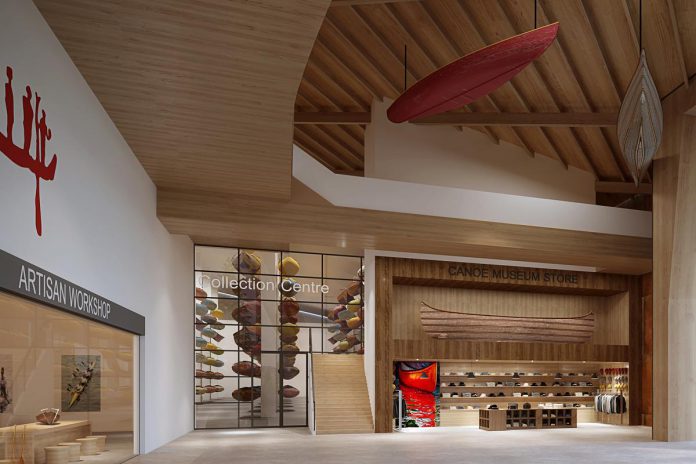
A wall of windows will allow museum visitors to see what’s in the Collection Hall right from the atrium on the main floor when they enter the building.
“Visitors will always be able to walk up to the glass and get a sense of the story of the canoe in all its forms,” explains Ward. “A lot of effort goes into the design, layout, interpretation, and presentation of the collection in the Exhibition Hall, but when people step into the Collection Hall or look through the window, they will immediately realize the story of the canoe is so much bigger than they ever imagined.”
That story includes the late iconic Canadian author and environmentalist Farley Mowat’s beloved Vagabond (also nicknamed Conception), a 1920s Peterborough Canoe Co. canoe that he donated to the Canadian Canoe Museum in 2006. Farley’s father, Angus, first acquired the canoe and brought it to Saskatchewan during the Great Depression.
The canoe was Farley Mowat’s first connection to nature in his youth. It was used throughout his life, even moving back to Ontario with him. As an avid sailor, Mowat continued to modify the canoe’s sailing rig throughout the years. “We had a love affair, the canoe and I,” Mowat once said. “She was part of me.”
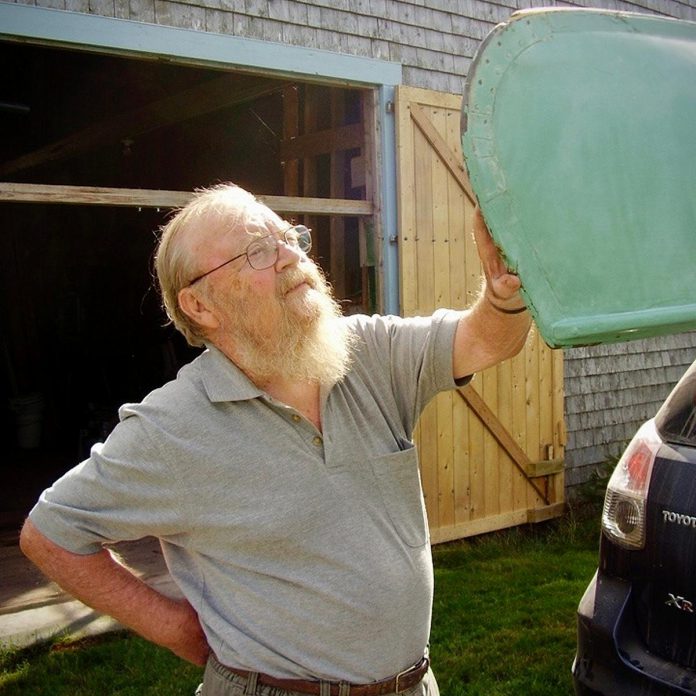
Vagabond has now been moved to the Collection Hall, where it will remain visible through the atrium windows. It is just one of many watercraft in the museum’s collection that will not initially be on display in the Exhibition Hall but represents a fascinating chapter in the story of the canoe.
While visitors will always be steps away from the windows of the Collection Hall while they browse the museum’s exhibits, grab a latte from the museum’s café, or visit the museum’s store, the Collection Hall will also be accessible for tours and by appointment. The museum’s design provides ample room to move a watercraft to ground level so guests, donors, and researchers can spend time with the canoe or kayak.
“The Collection Hall has been designed to accommodate traditional care practices, like smudging ceremonies,” notes Hyslop. “The entire building is designed with that in mind, so that kind of stewardship and care of the collection extends throughout the whole space.”
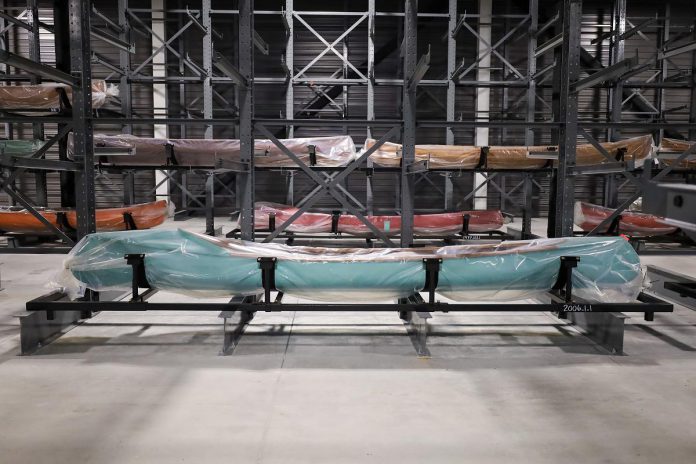
Small artifacts will be stored in a room separate from the Collection Hall, and that room will also be accessible for tours and by appointment.
With the Collection Hall on the first floor and the Exhibition Hall on the second floor, the museum has an ingenious method of moving watercraft from one floor to the other. When the atrium is not in use, the team will use a crane that swings out from the second-floor balcony to lower or lift a platform containing the watercraft on its custom-built cradle.
As for the atrium itself, it features a large east-facing curved window to let in lots of light, and the space can be rented after hours for corporate events. The south end of the atrium is the location of the museum’s café, with a seating area that leads out to a waterfront patio.
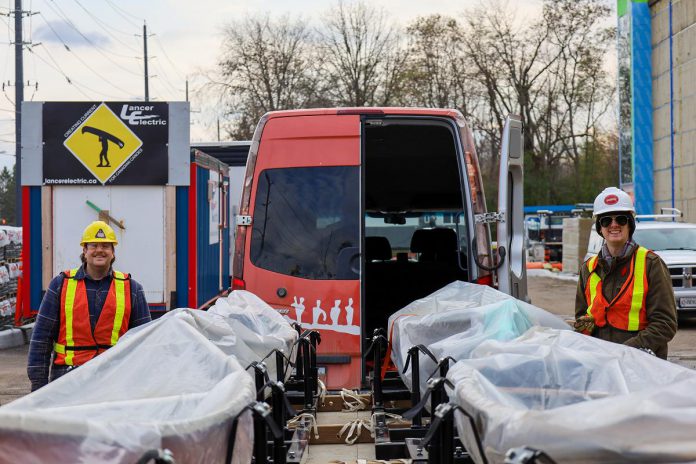
“One of the most amazing things about our architect’s creativity is their ability to find many uses for the same space,” says Ward. “We have so much efficiency in the design. At its very heart, the building is a functional and creative beauty. Its construction ensures that it meets all our needs.”
Hyslop adds that not only is the building’s design functional, but it immediately immerses visitors into the new museum and all that it offers beyond the exhibits. Right from the moment visitors enter the building, they can see through a floor-to-ceiling window into the Artisan Studio, where lots of hands-on activities will be taking place.
“We’ve made activities in the Artisan Studio visible to the public, so they are part of the regular visitor experience, whether you’re just coming in to go to the store or the café or whether you’re here for an exhibit visit and a tour,” says Hyslop. “We want people to be immersed in that making culture right from the moment they step through the front door.”

As the museum team continues moving the rest of the watercraft into the Collection Hall, they are also in the installation phase for the exhibits, working with knowledge holders and partners from coast to coast to coast. The Exhibition Hall will offer seven different exhibits exploring various themes through the lens of the over 100 canoes and kayaks on display.
“We’re bringing a lot of fresh, contemporary perspectives into the space,” says Ward. “The perspectives and stories reflect a balance of First Nation, Mètis, and Inuit watercraft, as well as canoes and kayaks and stories from peoples of all backgrounds.”
Work is also continuing on finishing the interior and exterior of the new building. Hyslop points out that, once all that work is completed, The Canadian Canoe Museum will just be at the beginning of its new life.
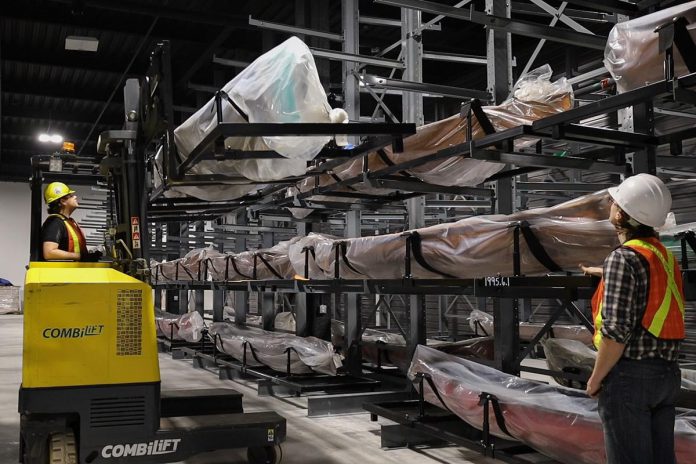
“The build we’re doing right now is amazing, but it is only the foundation for all of the programming and opportunities that will exist at the new location,” says Hyslop. “We’re looking forward to the days when we can return to welcoming visitors through the doors to see everything else the museum will offer.”
To support The Canadian Canoe Museum’s “Fill the Collection Hall” fundraising campaign, you can make a donation at canoemuseum.ca/ways-to-support.
For updates on the new museum, follow The Canadian Canoe Museum on Instagram and Facebook or subscribe to their newsletter.
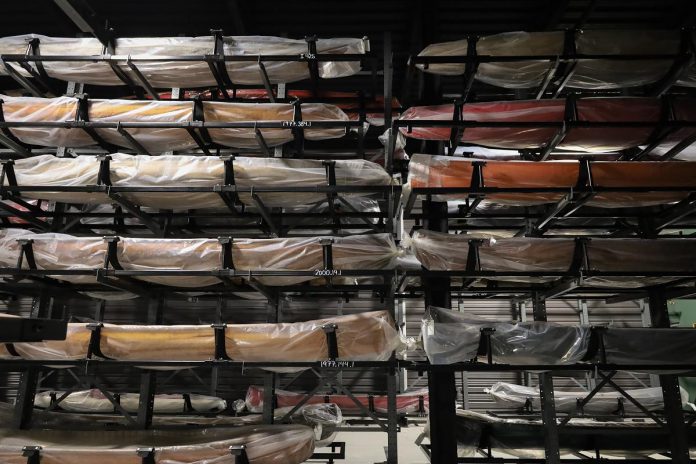
The Canadian Canoe Museum’s Move the Collection: The Final Portage campaign is supported by McWilliams Moving & Storage Ltd (Lead Sponsor and Official Mover of The Canadian Canoe Museum), kawarthaNOW (Media Partner), Peterborough & the Kawarthas Tourism (Tourism Partner), Grant Thorton (Final Portage Partner), along with supporters and donors from far and wide.
kawarthaNOW is proud to be the official media sponsor of The Canadian Canoe Museum’s Move the Collection: The Final Portage Campaign.


























